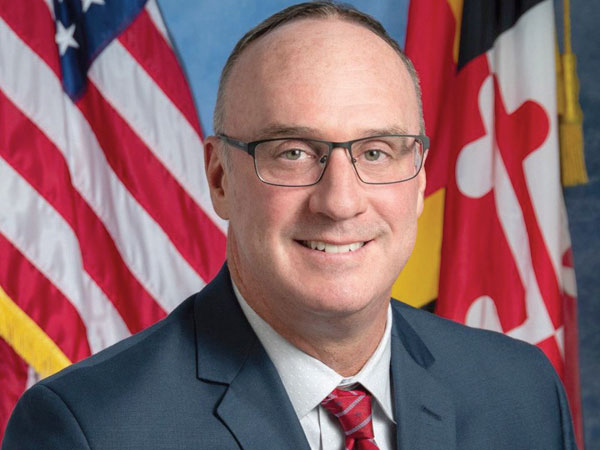AJOT: What is the latest update on the Howard Street Tunnel Expansion Project?
MPA Executive Director Bill Doyle: The Howard Street Tunnel project is moving forward. The expansion of the Howard Street Tunnel for double-stack rail is something that has been a priority for the State of Maryland and the Port of Baltimore for a very long time. It will be a game-changer for the Port. Right now, the project is in the environmental review and planning phase. In fact, CSX filed its completed environmental assessment application with the Federal Railroad Administration (FRA) on October 2, 2020 which kicked off a 30-day review period by the FRA. Construction is scheduled to begin next year, and it will be operational in 2024. The project will increase our container throughput by about 100,000 containers annually. Not all those containers will go out by rail though, as some will be delivered by trucks to our local market. This is a great example of a public-private investment with CSX, the state of Maryland, and others.

Doyle: They complement each other very well. We continue to work closely with our public-private partner at Seagirt, Ports America Chesapeake. Work is progressing on the second 50-foot deep berth that will allow two massive ships to visit the Port of Baltimore simultaneously. Underwater analyses and retrofit construction are underway, and in December, the Maryland Port Administration’s selected contractor will be dredging the berthing area. That berth, and four new supersized cranes arriving in April, are expected to be operational by summer 2021. We are already seeing container rebounds from the COVID-19 pandemic. In fact, our October container numbers should be the first year-over-year gains since the pandemic began. But for Tropical Storm Beta, our September 2020 container volumes would have increased by three percent over 2019, as we had three delayed container ships show up on October 1st. Our skilled longshore workforce also recently set a record with 5,536 container moves from the Maersk Edinburgh.
AJOT: In regard to Seagirt, the US Army Corps of Engineers recently awarded the Port $1.5 million to study “navigation improvements” at Seagirt Marine Terminal – specifically the Seagirt Loop Channel. Could you explain a little about the current navigation challenges at the terminal and how the study can help resolve them.
Doyle: We’re happy to be working with our great partners, the U.S. Army Corps of Engineers, on this project. This is a feasibility study that will look at deepening, widening, and improving efficiencies for the mega-ships that we continue to receive at Seagirt. With our 50-foot deep channel and Neo-Panamax cranes, Baltimore is already very well positioned to accommodate some of the largest ships in the world. Now, we want to create a loop channel that will make it easier for ships to come in, maneuver, and head out. Again, this will nicely complement the second-deep berth work as well as the Howard Street Tunnel project.
AJOT: The July cargo numbers are showing signs of a rebound from the Covid-19 emergency. What have been the prime drivers behind the uptick?
Doyle: E-commerce, distribution center and fulfillment center investment are all key during the COVID rebound. Baltimore is a logistics hub; we’ve invested a lot of capital in logistics. For instance, in August Amazon opened another one million square foot fulfillment center – that’s the fourth such Amazon center opened in the past few years. We continue to see positive cargo trends in our various key commodities. In August we had a 126 percent jump in cars from May. Cars were down earlier in the year and now we are seeing a buying surge sparked by pent-up demand. Our general cargo was up 15 percent, our high and heavy machinery was up 10 percent, and our containers were up eight percent, all from June when our cargo numbers were at their lowest due to COVID. Our container gains reflect the increasing popularity of e-commerce. We’ve also had significant increases in our project cargo business, including handling 15 huge General Electric heat steam recovery generators.
AJOT: The Ro/Ro business has been a major calling card for the Port – often described as the most complete Ro/Ro services in North America with both import and export loads – how has business rebounded in recent months?
Doyle: Ro/Ro is also on the rebound. Baltimore has the highest market share in the nation for high and heavy farm and construction machinery. We have all the major ocean carriers call on Baltimore and we also have a unique, industry-renowned quality program for Ro/Ro. This program brings together all the key members in the Ro/Ro supply chain monthly to go over the past month’s performance and discuss best practices. It has been a very well-received program over the years. Also, I can’t say enough about our incredible longshore workforce. Those men and women are experienced with Ro/Ro and are a major reason for our success.
AJOT: Refrigerated/reefer cargo has generally been in high demand in the US, has the Port experienced an uptick in reefer movements?
Doyle: Yes, we have. People have been cooking and eating at home more during the pandemic. MTC Logistics within the Port of Baltimore reported that their refrigerated and frozen food volumes are up year-over-year, with storage imports on pace for a near 12 percent increase while exports are on pace for an eight percent rise over 2019. MTC is a key partner for the Port and we are very happy to support their efforts.





